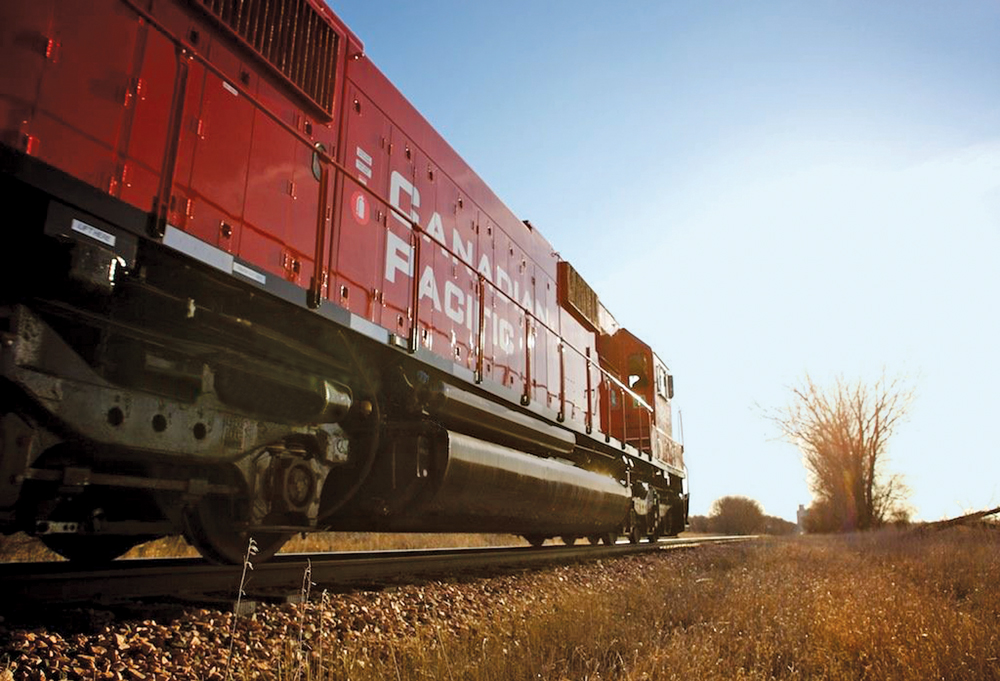With memories of the grain-handling chaos of 2014 still fresh and another large Prairie crop looming, the railways are calling for greater collaboration in moving this year’s harvest.
“To ensure success during this crop year, the broader supply chain must work together to collectively harness our energy so that the entire Canadian economy can reap the maximum benefit,” said CP CEO Hunter Harrison. “We have been preparing for this crop year for months and we are ready.
“The grain supply chain in Canada, like most efficient supply chains, works best when demand is well distributed throughout the year. The rail supply chain has returned to normal since the extraordinary crop and winter of 2013-14 and CP has continued to move record amounts of grain. This means there is now excess capacity in the supply chain, including thousands of rail cars in storage ready to move the latest crop.”
Read Also

CUSMA access key among other trade noise: Seeds Canada panel
Seeds Canada conference panelists say Canada needs to stay focused and wait as U.S. trade and tariff chaos develops, and a Canada-U.S.-Mexico Agreement review looms
Meanwhile CN says it’s “fully prepared to move the coming Western Canada grain harvest safely and efficiently over the crop year. CN has the motive power, freight cars and people to do the job.
“At the same time, the entire Canadian grain supply chain, from Prairie elevators to terminals at West Coast ports, will need to work collaboratively and at full capacity throughout 2016-17 to move the crop,” CN spokesman Mark Hallman adds. “CN will be operating 24 hours a day, seven days a week to do its part.
“CN’s operating plan is designed to enhance rail network capacity and to provide efficient hopper car cycle times between origin and destination. With the assets, team and solid operating plan in place, CN is ready to move its share of the coming crop to market.”
Meanwhile Wade Sobkowich, Western Grain Elevator Association executive director, says overall grain shippers are entering this crop year with an optimistic outlook.
“Many conditions are different than those which existed in 2013, such as less demand for shipping in other sectors and an early acknowledgment of the large crop size,” Sobkowich said.
Back in June, the WGEA sent a letter to the railways and the federal government noting that the Prairies were heading toward a harvest between 63 million and 74 million tonnes with more than additional eight million tonnes carry-over.
“We felt it important to provide both railways with as much advance notice of these projections as possible, so you may ensure enough capacity is available to meet shipper demand for the upcoming crop year,” Sobkowich said.
While the comments from CP and CN are encouraging, disconnects remain between the grain companies and the railways. Sobkowich points out while the railways call for 24-7 operation of grain terminals, that “will do nothing more than result in more sitting around and waiting for cars to arrive, and impose an unnecessary cost burden to the entire industry.” The important element is speedy unloading of rail cars once they are delivered.
“Grain facilities do not sit idle unless it is because they do not have rail cars,” he says. “When rail cars are presented at port terminal facilities, with appropriate notice and with a regular and consistent cadence, they are unloaded by terminal operators in a timely way.”
The grain companies communicate their delivery requirements “to both railways on a regular and frequent basis, so the railways have a good understanding of grain shippers’ collective demand on a week-to-week basis.” The companies need to know “in advance the capacity it will be offering in the various weeks, in each of the corridors.”
Grain companies face penalties from the railways if they fail to load and unload rail cars in a timely way, or if they do not use rail cars provided to the elevator, he said.
“This places accountability on grain shippers to perform.”
Currently, the railways are not held financially accountable if they don’t meet their delivery commitments, he added.
Harrison urged the grain companies to make more use of Thunder Bay to relieve the pressure on the Port of Metro Vancouver.
Sobkowich says grain companies make sales in a way that returns as much value for grains, oilseeds and pulse crops as possible and pointed out the delivery route should be a decision made by the shipper, who is the customer of the railways.
“That is not for the railways to dictate, that is for us to decide,” Sobkowich said.
Thus far, federal cabinet ministers say they are monitoring the situation but for now are leaving it to the railways and grain companies to deal with any issues.



















